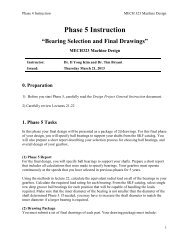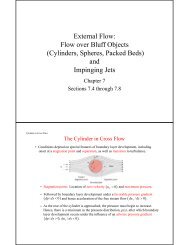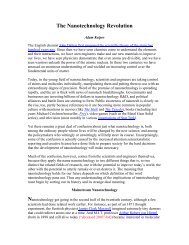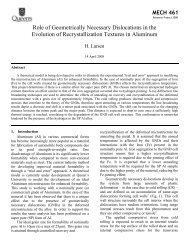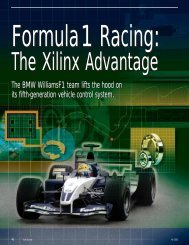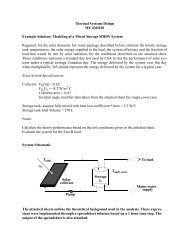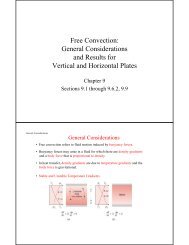Numerical Study of Passive and Active Flow Separation Control ...
Numerical Study of Passive and Active Flow Separation Control ...
Numerical Study of Passive and Active Flow Separation Control ...
Create successful ePaper yourself
Turn your PDF publications into a flip-book with our unique Google optimized e-Paper software.
Angle <strong>of</strong><br />
attack<br />
α<br />
6°<br />
4. <strong>Numerical</strong> Results<br />
Table 2. Computational parameters<br />
Reynolds<br />
number<br />
Re<br />
= U C / υ<br />
∞<br />
∞<br />
16<br />
Mach<br />
number<br />
M<br />
Grid nodes<br />
N × N × N<br />
5<br />
10 0.2 840 × 90 × 120<br />
The numerical simulations include three cases: uncontrolled flow separation (baseline<br />
case), flow separation control with a pair <strong>of</strong> passive vortex generators (Case 1), <strong>and</strong> flow<br />
separation control with a pair <strong>of</strong> active vortex generators (Case 2). The flow conditions<br />
<strong>and</strong> mesh used are exactly the same for all three cases. The numerical simulation results<br />
are summarized <strong>and</strong> compared in the following subsections.<br />
4.1 Baseline Case<br />
In the baseline case, the vortex generators are at their fully retracted position. The<br />
typical feature <strong>of</strong> the flow field can be seen from a side view <strong>of</strong> the isosurface <strong>of</strong><br />
instantaneous spanwise vorticity with ω = 30 as depicted in Fig. 10. The separation <strong>of</strong><br />
y<br />
free shear layer from the airfoil surface, vortex shedding from the separated shear layer,<br />
reattachment <strong>of</strong> the shear layer, <strong>and</strong> breakdown to turbulence in the boundary layer can<br />
be seen clearly in the figure.<br />
Fig. 10. Isosurface <strong>of</strong> instantaneous spanwise vorticity ( ω = 30 )<br />
Fig. 11 shows the time- <strong>and</strong> spanwise-averaged velocity vectors at every third<br />
streamwise grid location <strong>and</strong> the contours <strong>of</strong> streamwise velocity. The time-average was<br />
performed over a time period <strong>of</strong> 15 ∞ U C / . The contours <strong>of</strong> the reversed flow with<br />
negative streamwise velocity are plotted in a dark color. The mean flow field in Fig. 11<br />
ξ<br />
η<br />
y<br />
ζ



